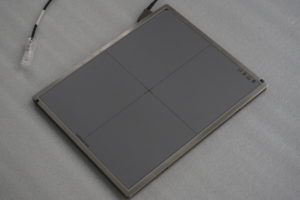For the same flat panel detector, its DQ E is variable at different spatial resolutions; the maximum DQE is not equal to DQ E at any spatial resolution. The formula for DQ E is as follows:
DQE = S 2 × M F T 2 / N SP × X × C
S : average signal intensity; M T F : modulation transfer function; X: X-ray exposure intensity; NPS: system noise power spectrum; C: X-ray quantum coefficient.

From the calculation formula we can see that there are different DQEs in different M TF values, that is to say, different DQEs at different spatial resolutions. The limit DQ E of the indirect conversion flat panel detector is relatively high, but as the spatial resolution increases, the DQE decreases more; the limit DQE of the direct conversion flat panel detector is not as high as the limit DQ E of the indirect conversion flat panel detector, but As the spatial resolution increases, the DQ E decreases more slowly. At high spatial resolution, DQE surpasses the indirect conversion flat panel detector. This characteristic indicates that indirect flat panel detectors are more capable of distinguishing differences in tissue density; while direct conversion flat panel detectors have a higher ability to distinguish between subtle structural differences.
Author:Alina
Tel:+86 18953679166
Email:service@newheek.com
Company:Weifang Newheek Electronic Tech Co., Ltd.